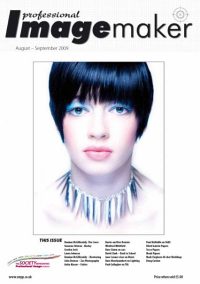articles/Paper/moablegion-page1
Paper Chase Moab Paper by Legion - part 1 of 1 2
by Mike McNamee Published 01/08/2009

If boxes, name and livery were the most important features of a paper then Moab would be well ahead of most. Moab itself is tucked away in a valley in Utah, surrounded by some of the most awesome landscape around. The Legion Paper Mill is originally from that part of the world and some of the awe still rubs off onto the papers, they are well regarded by those in the know.
We tested one of the new sample boxes available from Colour Confidence and even the box was the most substantial one we have ever seen! Four surfaces are provided at different weights, along with a canvas.
Initially we visited the Moab website and downloaded the relevant profiles. The profiles are made using a 1,700-patch target (we think - we had some trouble interpreting the raw code of the profile). Both BasICColor and ColorVision are mentioned in the header tags of the profiles. This is only relevant because we have some reservations about the quality of the profiles and those for the Colorado papers have different characteristic to those of Entrada. One of the differences is that Entrada are made using BasICCOlor software, the Colorada using ColorVision.
Colorado Fiber Gloss 245 and Fiber Satine 245
We immediately noted that when a perceptual rendering intent was employed there was significant banding in the Granger Chart, enough to really start the alarm bells ringing!
We immediately tried a print using Relative Colormetric rendering intent and the issue went away, although there remained a rather heavy boundary line between the magenta and cyan areas of the gamut. The banding was evident both in prints and in a screen soft proof so it does seem to be a profile flaw.

TOP: The Entrada Natural has a creamy colour as indicated by its
position in the Lab plot, the other papers are a cooler blue tone.
NEXT TO TOP: Excellent colour values of skin tones are indicated
by the tight clustering of points around the blue (diamond) target
values, the residual errors were in the lightness channels. The statistics
are tabled above and show little effect when changing the rendering
intent.
LEFT: The flawed Granger Chart is on the right.
The error statistics were not too badly compromised but were not as good as those we obtained with the TECCO papers we also tested for this issue. The baryta-based Colorado papers were at the poorer end of the scale when compared with the 30 papers we tested for Paper Chase 22 (January 2008). Conversely, the gamut volumes were slightly higher than average.
Both papers have a grammage of 245gsm, both are baryta coated and both contain OBAs. The OBA lift is a little over 7% above the base white-reflectance. Both papers are about 4 Lab points cool (ie blue) in their base tone.
The four prints which were audited all looked substantially the same and carried the same overall signature to their error statistics. In all cases the high errors were in green, yellow green and yellow. The blue errors were particularly low. The skin tones were particularly accurate and fully saturated.
You are currently on page 1 Contact Mike McNamee
1st Published 01/08/2009
last update 09/12/2022 14:56:47
More Paper Articles
There are 27 days to get ready for The Society of Photographers Convention and Trade Show at The Novotel London West, Hammersmith ...
which starts on Wednesday 14th January 2026





